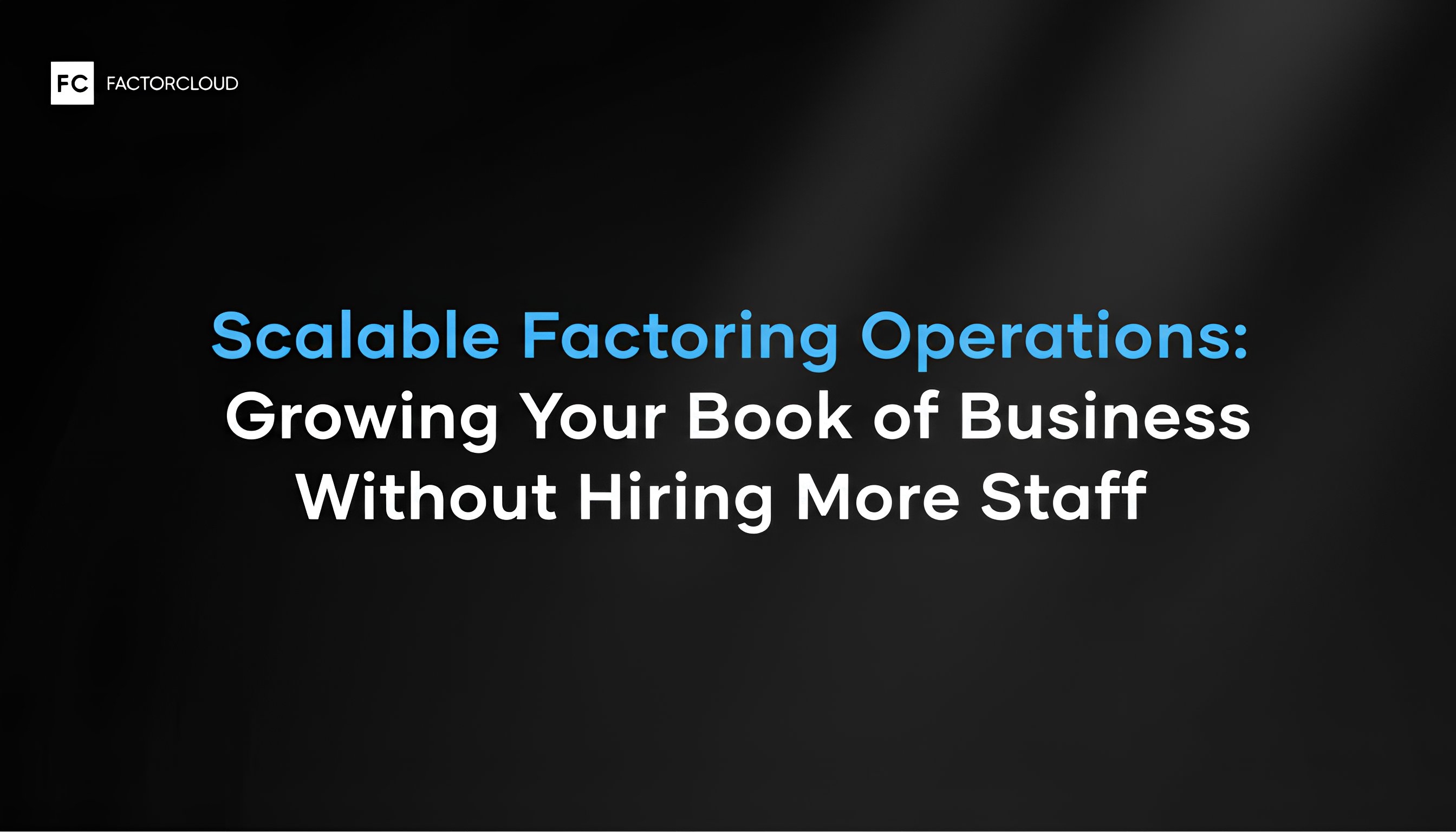Top 5 Invoice Factoring Mistakes New Companies Make—And How to Avoid Them
Starting a factoring company can be exciting, but it comes with a steep learning curve. From onboarding your first clients to managing complex accounting workflows, there are plenty of opportunities to stumble.
Below, we’ve broken down the top five invoice factoring mistakes that new companies make, why they happen, and how to avoid them before they cost you time, money, or clients.
1. Taking on the Wrong Clients
When you’re just starting out, it’s tempting to sign every prospect that walks through the door. But saying “yes” to the wrong client can lead to long-term headaches. Think:
- Disputed invoices
- Missed payments
- Poor communication
- Unnecessary risk
Watch out for clients with poor documentation or inconsistent invoicing habits, debtors with bad payment history, and industries with high dispute rates or seasonal instability. And remember: even a good client today can become a challenge tomorrow. That’s why many new factors use tools like ROX to dig deeper.

2. Underestimating the Importance of Accurate Accounting
This one shows up often in early operations: missing journal entries, messy reconciliations, or inconsistent treatment of fees and reserves. These kinds of invoice factoring mistakes can quietly snowball until your books are a mess.
A reliable factoring process starts with disciplined accounting. That means adopting a double-entry system, tracking every transaction with a debit and credit, and reconciling bank statements on a regular cadence.
Here are some best practices:
- Separate client and operational accounts
- Use standardized naming conventions across ledgers
- Avoid tracking transactions manually for long and invest in technology early
Investing in strong invoice factoring software, like FactorCloud, gives you the structure and visibility you need from day one—particularly when your team is small and every mistake matters.

3. Relying Too Heavily on Manual Processes
Manual processes might get you by for the first couple of clients, but they don’t scale. Too many new factoring companies still rely on spreadsheets for everything from schedule creation to collections tracking.
When you’re trying to grow, the cost of time-consuming tasks adds up fast.
Here are some of the biggest risks of going manual:
- Duplicate data entry leads to errors and inconsistencies
- Payments get misapplied or go untracked
- Invoices and supporting documents get lost in inboxes
This is where automation can become a massive advantage. The right invoice factoring software doesn’t just save time. It reduces the chance of human error and helps your team focus on higher-value work.
4. Overlooking Communication With Debtors
Strong debtor relationships are just as important as strong client relationships. But many new factoring companies focus so much on the client side of the house that they forget the value of staying connected to the people actually paying the invoices.
Below are a few ways you can improve debtor communication:
- Send Notices of Assignment promptly and confirm receipt
- Follow up on outstanding payments with a clear contact cadence
- Set reminders for when aging hits key milestones (30, 60, 90+)
If you're looking to build long-term relationships, it’s important to set up clear and efficient processes for working with debtors from day one. That can be the difference between steady cash flow and a growing collections problem.
5. Not Building for Growth
A common pitfall? Building your processes around a small, static book of business. But if your company is successful—and we hope it is—you’ll eventually need to scale. And if you haven’t planned for that, growing pains will catch up quickly.
This is what scaling without structure looks like:
- Adding headcount instead of improving workflow
- More exceptions than rules
- Back-end chaos that slows down funding
To avoid these factoring company risks, start designing for scalability early. That doesn’t mean over-engineering from the beginning. It means being intentional about workflows and choosing tools that grow with you.
Use reporting to monitor capacity, identify bottlenecks, and guide decisions. And standardize as much as possible—especially when it comes to data collection, payment applications, and client interactions.

Mistakes Are Inevitable—But They Don’t Have to Be Expensive
Every new factoring company makes mistakes. That’s part of the process. But knowing what to watch for and how to sidestep common traps can help you build a stronger foundation.
Avoiding these five invoice factoring mistakes will help you stay efficient, protect your cash flow, and build trust with clients and debtors alike.
Want to dig deeper into smarter workflows, automation, and reporting? Schedule a demo with FactorCloud to see how we support new and growing factoring companies.




